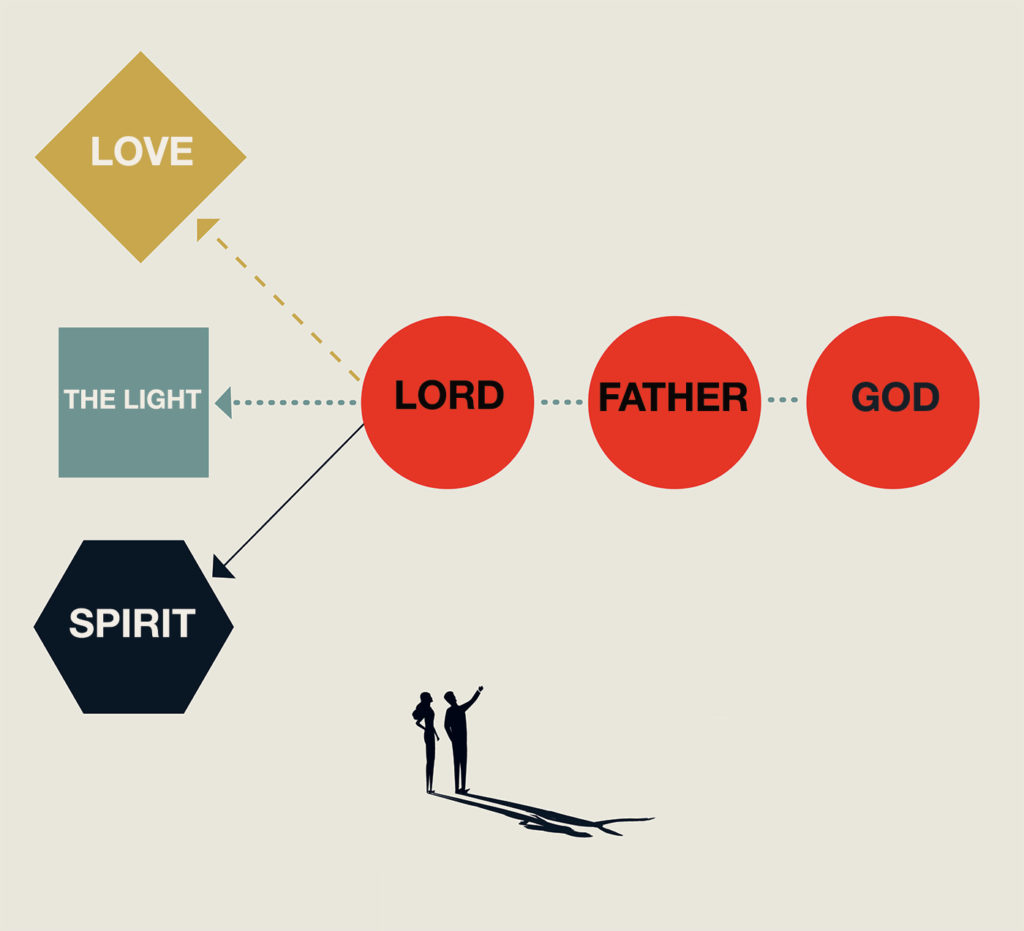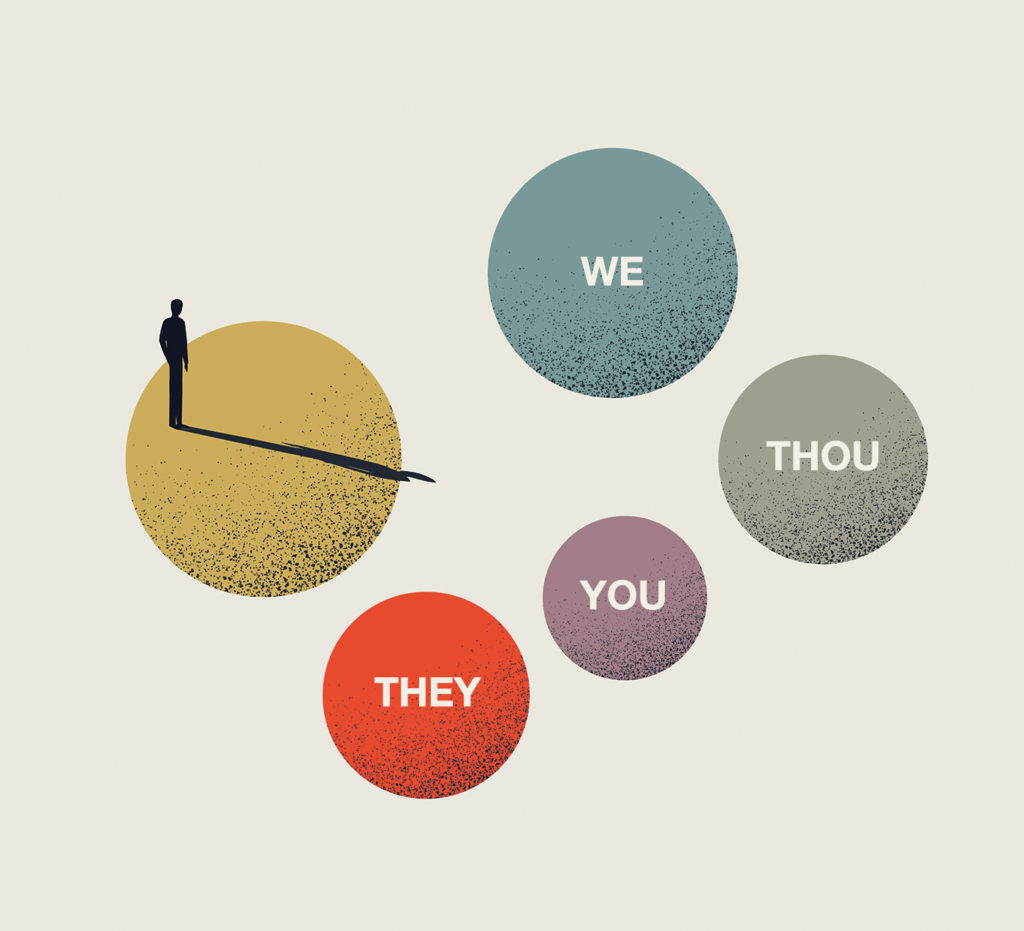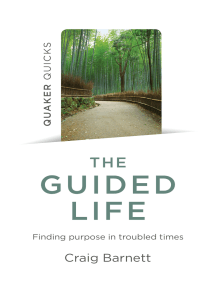Mind the Light:
Quaker Spirituality and the Wisdom of Thomas Merton
By Alan Kolp
The Christ of the ikons represents a traditional experience formulated in a theology of light, the ikon being a kind of sacramental medium for the illumination and awareness of the glory of Christ within us.1
Thomas Merton was exposed to Quakerism at an early age. When he was six years old, Merton mused that it was odd that his parents had given him no religious training. He also quipped that his mother went to church sometimes. Merton notes, “But anyway, Mother went to the Quakers, and sat with them in their ancient meeting house.”2 Merton says he, too, only a few months later, visited with the Quakers: “I think it must have been after Mother went to the hospital that, one Sunday, I went to the Quaker meeting house with Father. He had explained to me that the people came and sat there, silent, doing nothing, saying nothing, until the Holy Spirit moved someone to speak” (SSM 12).
As a lifelong Quaker, sometimes I wonder who Merton would have become had his spirit taken root with Quakers. Probably I would have met and known the “Quaker Merton.” It is safe to say, however, he would not be the Merton we all know! Merton did not immediately ditch the Quakers. In 1933 Merton was back on Long Island and again visited the Quaker Meeting. “One Sunday I went to the Quaker meeting house in Flushing, where Mother had once sat and meditated with the Friends. I sat down there too, in a deep pew in the back, near a window. The place was about half full
. . . . [T]hey sat silent, waiting for the inspiration of the Holy Ghost. I liked that. I liked the silence. It was peaceful” (SSM 115). Ultimately however, the Quakers were not for Merton. He would be drawn in a very different liturgical way – to Roman Catholicism.
In August 1938, Merton was engaged in his process of conversion. He decided he wanted to go to church again. “At first, I had vaguely thought I might try to find some Quakers, and go and sit with them. There still remained in me something of the favorable notion about Quakers that I had picked up as a child . . . . But, naturally enough, with the work I was doing in the library, a stronger drive began to assert itself, and I was drawn much more imperatively to the Catholic Church” (SSM 206). Within three months Merton was baptized into the Roman Catholic Church. Merton’s Quaker days were finished. The newly minted Catholic would soon move on to become a Trappist monk, finding his spiritual home in the monastery instead of the meetinghouse. While his Quaker days were finished, his affiliation with Quakers lasted until his dying day. In the 1960s Merton developed a relationship with two Quaker couples, Douglas and Dorothy Steere3 and June and John Yungblut4 (who fortunately also became friends of mine).
Alan Kolp is Professor of Religion and holds the University Chair in Faith & Life at Baldwin Wallace University in Cleveland, Ohio. A lifelong Quaker, he is also a Benedictine oblate. Previously, he was Dean and Professor of Historical and Spiritual Studies at Earlham School of
Religion. He is the author of Fresh Winds of the Spirit and A Canopy of Light and Love. He is a Alan Kolp current member of the ITMS Board and also serves on the Nominations Committee.
While the differences between the Trappist monastery and Quaker meetinghouse are easy to articulate, I am also intrigued by various touch points between Merton’s spirituality and Quaker spirituality. In this discussion I identify one common thread linking Mertonian and Quaker spiritualities, namely, the contemplative life. There is a familiar phrase Quakers use, “Mind the Light,” that organizes a comparative examination of the contemplative life according to Merton and the Quakers.
The image of light plays a central role in Christian history, beginning with creation itself. After creating the heavens and the earth, “God said, let there be light” (Gen. 1:3). In John’s Gospel the cosmic light of creation becomes personal in Jesus: “The true light that enlightens every person was coming into the world” (Jn. 1:9). The incarnation of the light in Jesus becomes the key to understanding the contemplative life and the Quaker aim to mind the light.
To live contemplatively, as Merton did, or to mind the light, as Quakers seek to do, involves a three-phase process. It is important to see these phases simply as an analytic construct. In reality they are overlapping, not sequential – one bleeding into another without sharp demarcation. But an understanding of this process sets the stage for our comparison of Merton’s and the Quaker views of the contemplative life. Simply put, the three-phase process details how a person engages the “light within,” as Quakers describe Christ’s presence with us. Importantly, Quakers would affirm that presence is with us, regardless of whether we are aware of it. I am sure Merton would agree.
The initial phase of the process is called the convicting phase. To understand this phase, we must be clear that both Quakers and Merton assume that human beings are sinful. The convicting phase is that occasion when the light shines on the human soul to reveal the sin that separates us from God and often alienates us from neighbor. Margaret Fell, seventeenth-century Quaker leader, powerfully describes this convicting phase. In a letter to Friends (a more formal name for Quakers) she says, “let the Eternal Light search you . . . for this will deal plainly with you; it will rip you up, and lay you open . . . naked and bare before the Lord God, from whom you cannot hide yourselves.”5 This requires awareness, but it is more than awareness. It is also an acknowledgment of our alienation from God. In this phase we know and are known in our separated, alienated condition.
In Pauline theology this convicting phase commences the justification process. The light makes us aware and convicts us of our sin, but we have to be ready to move beyond sin. I like the way the English Quaker John Punshon dynamically puts it: “The light is that of God within you. . . . It is active and loving. It will show you your sins. It carries power and will enable you to overcome them.”6 The convicting phase couples the activity of the light to show us our sin, setting the stage for the next phase, namely the converting phase, with our activity of engaging and willingly participating in that activity of the light.
This resonates with Merton’s understanding, as we can see from a passage in New Seeds of Contemplation where he anticipates all three phases of the light’s work in us: “The presence of God in His world as its Creator depends on no one but Him. His presence in the world as Man depends, on some measure, upon men. . . . [W]e are able to decide whether we ourselves, and that portion of the world which is ours, shall become aware of His presence, consecrated by it, and transfigured in its light.”7 Although this jumps ahead to include the third phase, we can easily argue this is Merton’s expression of our three-phase process: awareness, consecration and transformation in the light.
The second phase of engaging the light within I identify as converting – what Merton just called consecration. Although converting is a theologically loaded word, I like it because it means “turning.” We turn from sin and head to salvation. We turn from alienation and head towards integration. Turning allows that the grace of God is part of the process, but recognizes that humans have a responsive and participatory part to play.
Doubtlessly, Merton experienced a number of conversions throughout his life, as most of us do. While some may see conversion as an event, for both Merton and early Quakers, it was a process. Perhaps the earliest account of Merton’s conversions comes from his time in Rome in early 1933 before heading to Cambridge University. One night Merton had a vivid sense of his dead father being present.
Merton’s commentary on that experience is moving, as it blends the convicting and converting phases. The whole thing passed in a flash, but in that flash, instantly, I was overwhelmed with a sudden and profound insight into the misery and corruption of my own soul, and I was pierced deeply with a light that made me realize something of the condition I was in, and I was filled with horror at what I saw, and my whole being rose up in revolt against what was within me, and my soul desired escape and liberation and freedom from all this with an intensity and an urgency unlike anything I had ever known before. (SSM 111)
While this begins with the convicting phase, it transitions to the converting phase. This soon becomes clear when Merton narrates his visit to Santa Sabina, a Dominican Church. Merton says he had “a very definite experience, something that amounted to a capitulation, a surrender, a conversion, not without struggle, even now, to walk deliberately into the church with no other purpose than to kneel down and pray to God” (SSM 112). This conversion experience, however, was not the event in Merton’s life that propelled him straight into contemplation. He began almost immediately to backslide and would have to be re-engaged in the conversion process.
Merton would undergo a number of conversion experiences. This would include his conversion into the Roman Catholic Church in the late 1930s, his Spirit-led move to consider joining the Franciscans and, finally, the move to join the Trappists at Gethsemani. But conversion does not stop within the monastic walls. A feeling for the ongoing nature of that comes from a passage in his book, The Monastic Journey:
The monastic life is a search for God and not a mission to accomplish this or that work for souls. . . . Without a true metanoia, a true conversion of one’s whole life, monastic discipline is an illusion. There must be a total reorientation of our entire being from the love of self to the love of God. The monk cultivates ‘contempt’ for
the world in the sense in which the world is opposed to God.8
With these words, it is probably fair to say the conversion process culminates in the final conversion from life into death and whatever is beyond that.
This idea connects well with the language George Fox, the earliest Quaker, used when he chose the image of the “ocean of darkness and death” to describe his life under sin. In a graphic fashion he recounts, “When I was myself in the deep, under all shut up, I could not believe that I should ever overcome; my troubles, my sorrows, and my temptations were so great, that I thought many times I should have despaired.”9 But there is hope. Through the conversion process Fox says that the person trapped in the ocean of darkness and death is released and enters the ocean of light and love. In his own words Fox says,
Now the Lord God hath opened to me by his invisible power how that every man was enlightened by the divine light of Christ; and I saw it shine through all, and that they that believed in it came out of condemnation and came to the light of life and became children of it. . . . This I saw in the pure openings of the Light without the help of any man. (Fox, Journal 33)
Surely, God’s grace is present in the continuous conversion process for Fox, Merton and every other person who is moved from sin to salvation, from alienation to alignment.
Douglas Steere, a Philadelphia Quaker involved in ecumenical work whom Merton met in the 1960s, describes the underlying grace necessary for the continuing conversion process, as it is part of the contemplative experience. Steere says,
I believe we could also agree in assuming that conversion is continuous and that, in spite of one’s intentions, there is no such thing as the total commitment of a person to grace. . . . All of this means that we are unfinished creatures and nodes of unfinished creation even when we have been drenched with grace, and that we require all the skilled assistance that can be given us in the continuous process of increasing self-surrender and inward abandonment to the grace that the Christian life calls for.10
The conversion process delivers us to be able to live in the light of life, which is the third phase of engaging the Light within, namely, the contemplating phase.
In The Monastic Journey Merton defines the contemplative life in a way that resonates with Quaker spirituality. “The true contemplative life is then simply a deep penetration and understanding of the ordinary Christian life which, for all that we call it ‘ordinary’ is the most wonderful of all miracles: God himself living in us!” (MJ 48). Contemplative living presumes that we are aware of that Divine presence within us – the Light Within, as Quakers frequently name it. With the image of light comes the metaphor of seeing and, then, understanding.
Douglas Steere was probably more understanding of and resonant with Merton’s experience than any other Quaker of the twentieth century. Steere was a student of the Catholic spiritual tradition. He had experienced some time in the German Benedictine monastery of Maria Laach. When Douglas and his wife, Dorothy, met Merton at Gethsemani in the 1960s, there was a meeting of the souls. So
Douglas Steere defines contemplation in a way that fits the Mertonian perspective. Steere writes, We, too, might find some help in defining contemplation if we put it in terms of a sustained scrutiny for meaning. If we use the metaphor of the eye, contemplation could be described as the power to look steadily, continuously, calmly, attentively, and searchingly at something. Thomas Aquinas paraphrases this nicely in calling contemplation, “A simple, unimpeded and penetrating gaze on truth.” (Steere 107)
The contemplative engages ordinary life with the attentiveness of this power of seeing – seeing the possibility of the miracle instead of the purely mundane.
The Mertonian-Quaker perspective of the contemplative life seeks to transform the mundus – the world – into the paradise that was lost through our willful displacement of God by our own egocentrism. In Merton’s famous language, we opted for a false self. But the possibility of being convicted and converted always existed; we never lost the image of God in which we were created. We could rediscover our true self. This rediscovery would always be both a personal and a communal discovery.
Both the personal and the communal aspects are readily apparent in Merton’s famous experience in Louisville in the spring of 1958 at the corner of Fourth and Walnut. Both aspects are linked in a wonderful passage, which underscores the possibility for every one of us and points to the reality for those contemplatives on the journey:
At the center of our being is a point of nothingness which is untouched by sin and by illusion, a point of pure truth, a point or spark which belongs entirely to God . . . . This little point of nothingness and of absolute poverty is the pure glory of God in us. It is so to speak His name written in us, as our poverty, as our indigence, as our dependence, as our sonship. It is like a pure diamond, blazing with the invisible light of heaven. It is in everybody, and if we could see it we would see these billions of points of light coming together in the face and blaze of a sun that
would make all the darkness and cruelty of life vanish completely.11
What a vision! A similar perspective of both the personal and the communal is found with the Quaker focus on minding the light. In a letter to a group of followers, George Fox admonishes them, “therefore all mind your gift, mind your measure; mind your calling and your work. . . . Mind the light, that all may be refreshed one in another, and all in one. And the God of power and love keep all Friends in power, in love.”12 To mind the light is to know and live in the presence of this God of power and love. Pay attention!
To live in that power and love enables the contemplative to rediscover the glory of paradisiacal life. Merton uses paradise tones to describe the beginning of a new day:
How the valley awakes. . . . The first chirps of the waking day birds mark the “point vierge” of the dawn under a sky as yet without real light, a moment of awe and inexpressible innocence, when the Father in perfect silence opens their eyes . . . [T]he most wonderful moment of the day is that when creation in its innocence asks permission to “be” once again, as it did on the first morning that ever was. . . . Here is an unspeakable secret: paradise is all around us and we do not understand.
It is wide open. The sword is taken away, but we do not know it. (CGB 117-18)
This is a powerful claim, namely, that daily we are given a paradisiacal opportunity. For Merton, as it is for Quakers, this is a spiritual opportunity. On our own we live east of Eden. George Fox shares Merton’s sentiments that we can have paradise without literally dying, although both would say there has to be a death to the old self or false self. In Merton-like words, Fox wrote in the seventeenth century, “I was come up in spirit through the flaming sword into the paradise of God. All things were new, and all the creation gave another smell unto me than before, beyond what words can utter. I knew nothing but pureness, and innocency, and righteousness, being renewed up into the image of God by Christ Jesus” (Fox, Journal 27). This is not a dream. For Quakers and for Merton it is a vision.
Dreams do not offer new life in the Spirit. Vision does give us a sense for the possibility. Contemplative living is the process of incarnating and living out that vision. The contemplative life is profoundly described in the opening words of New Seeds of Contemplation:
Contemplation is the highest expression of man’s intellectual and spiritual life. It is that life itself, fully awake, fully active, fully aware that it is alive. It is spiritual wonder. It is spontaneous awe at the sacredness of life, of being. It is gratitude for life, for awareness and for being. It is a vivid realization of the fact that life and being in us proceed from an invisible, transcendent and infinitely abundant Source. Contemplation is, above all, awareness of the reality of that Source. It knows the Source. (NSC 1)
This reminds us of Steere’s earlier sense of contemplation as “a sustained scrutiny for meaning.” To understand the full meaning of the contemplative life, one more step needs to be taken.
The contemplative journey is not simply a personal, inner journey. For Merton and Quakers it necessarily entails an action or ministry component. Merton states it clearly: “Far from being essentially opposed to each other, interior contemplation and external activity are two aspects of the same love of God. But the activity of a contemplative must be born of his contemplation and must resemble it” (NSC 192). Living in the presence of God – minding the light – means that we necessarily become instruments of that presence of the light in the world. Merton frames this with the perspective of obedience. He invites each of us, “Come, let us go into the body of that light. Let us live in the cleanliness of that song. Let us throw off the pieces of the world like clothing and enter naked into wisdom. For this is what all hearts pray for when they cry, ‘Thy will be done’” (NSC 289). Jesus is our model: the suffering servant. The contemplative call is imitatio Christi – to do the same.
The imitation of Christ does not mean his followers will be crucified. It does mean becoming a light to the world and serving in the power and love of the Spirit. Fox is explicit that we have a shared vocation: to minister. “So the ministers of the Spirit must minister to the spirit that is transgressed and in prison, which hath been in captivity in every one; whereby with the same spirit people must be led out of captivity” (Fox, Journal 263). Like Jesus, the contemplative is a free person and ministers to liberate others – from their false self and from their ocean of darkness and death. Again, Jesus is the role model. The contemplative becomes the visible image in the world of what is spiritually possible.
The contemplative as image of the Divine in the world enables our conclusion, which incorporates the epigraph at the beginning of the paper. It is well known that Merton appreciated the Orthodox theologians he read. From them he enriched his spirituality. They are the backdrop for the epigraph: “The Christ of the ikons represents a traditional experience formulated in a theology of light, the ikon being a kind of sacramental medium for the illumination and awareness of the glory of Christ within us.” Merton and Quakers share the conviction that the contemplative life is experiential – an experience. And they agree that the contemplative life has a sacramental character.
In fact Quakers always begin with experience, rather than theology. And experience is what led Merton to leave the academy and enter the monastic community. However, the contemplative experience will always be articulated with some kind of theology. Felicitously, the Mertonian theology in the epigraph is labeled “a theology of light.” This perfectly fits the Quaker spirit. The contemplative is one who minds the light.
If we mind the light, we come to live in the light. In this process we become images (or icons) of the light in the world. As an icon of the light, we become visible signs of the invisible Divine Reality. As such, each contemplative becomes “a kind of sacramental medium for the illumination and awareness of the glory of Christ within us.” The life and action of the contemplative becomes a light in a world characterized by a great deal of darkness. The contemplative is one who has seen the light. He or she is now, as Merton recognized at Fourth and Walnut, “like a pure diamond, blazing with the invisible light of heaven.” He or she now takes up the sacramental ministry of the ocean of light and love.
1. Thomas Merton, The Hidden Ground of Love: Letters on Religious Experience and Social Concerns, ed. William H. Shannon (New York: Farrar, Straus, Giroux, 1985) 642 [3/23/1968 letter to June J. Yungblut]; subsequent references will be cited as “HGL” parenthetically in the text.
2. Thomas Merton, The Seven Storey Mountain (New York: Harcourt, Brace, 1948) 10; subsequent references will be cited as “SSM” parenthetically in the text.
3. For Merton’s correspondence with Douglas Steere, see Douglas V. Steere, “Notes After First Visit and Correspondence 1962-1968,” The Merton Annual 6 (1993) 23-53, as well as E. Glenn Hinson’s preceding article on Merton and Steere: “Rootedness in Tradition and Global Spirituality,” The Merton Annual 6 (1993) 6-22; see also Douglas V. Steere, “Foreword,” in Thomas Merton, The Climate of Monastic Prayer (Washington, DC: Cistercian Publications, 1969) 13-27; Thomas Merton, Contemplative Prayer (New York: Herder & Herder, 1969) 7-14.
4. For Merton’s letters to June and John Yungblut, see HGL 635-48; see also William Apel, Signs of Peace: The Interfaith Letters of Thomas Merton (Maryknoll, NY: Orbis, 2006) 143-60.
5. Hugh Barbour, The Quakers in Puritan England (New Haven, CT: Yale University Press, 1964) 98.
6. John Punshon, Portrait in Grey: A Short History of the Quakers (London: Quaker Home Service, 1984) 36.
7. Thomas Merton, New Seeds of Contemplation (New York: New Directions, 1961) 295; subsequent references will be cited as “NSC” parenthetically in the text.
8. Thomas Merton, The Monastic Journey, ed. Brother Patrick Hart (Kansas City: Sheed, Andrews & McMeel, 1977) 34; subsequent references will be cited as “MJ” parenthetically in the text.
9. John L. Nickalls, ed., The Journal of George Fox (Cambridge: Cambridge University Press, 1952) 12; subsequent references will be cited as “Fox, Journal” parenthetically in the text.
10. Douglas V. Steere, Together in Solitude (New York: Crossroad, 1985) 4-5; subsequent references will be cited as “Steere” parenthetically in the text.
11. Thomas Merton, Conjectures of a Guilty Bystander (Garden City, NY: Doubleday, 1966) 142; subsequent references will be cited as “CGB” parenthetically in the text.
12. George Fox: http://www.hallvworthington.com/Letters/gfsection1.html (accessed 1 May 2015).








